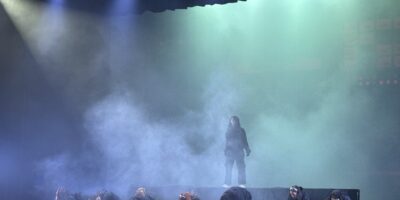The Waterloo Engineering Competition was held over November 2nd and 3rd, involving undergraduate students from all engineering departments in a competition centered on problems designed to test the genius of the competitors. The competition saw groups of up to 4 competitors competing in 3 categories: Consulting Engineering, Senior Team Design, and Junior Team Design.
All competitions were split up into two major components: a design phase on Friday night, followed by a presentation on Saturday morning. In Consulting Engineering, teams were given 5 hours to prepare a technical report, up to 15 pages in length, detailing their solution and analysis , as well as a 15 to 20 minute PowerPoint presentation for Saturday’s Presentation. Senior Design allowed teams 6 hours to design, build, and test their devices, as well as preparing a 15 to 20 minute PowerPoint presentation. Junior Design allotted 4 hours for the design, building, and testing of prototypes, as well as preparing a poster for the presentation.
In the Consulting Engineering competition, teams were asked to consider Canada’s agricultural industry and its impact on worldwide hunger. Each team was ‘hired’ by the Government of Canada and given the task of designing a solution to improve the agriculture industry. This solution needed to contribute to food security and Canada’s global presence in the agriculture industry while reducing worldwide famine and maintaining enough resources to sustain the consumption within Canada.
Senior Design saw teams attempting to design a Mars Rescue Rover capable of surviving re-entry, retrieving a stranded astronaut, Dr. Astronaut, M.D., and moving him to safety. The team’s device needed to be able to survive and properly recover from a 1.5m fall from a scaffold, and then be able to move by a remote control panel connected to the rover by a cable. The rover was to retrieve Dr. Astronaut, M.D. and transport him safely to the Mars base. Teams were given a budget of $10 000 to design a 30cm x 40cm x 40cm device, using supplies which included a wide variety of items including metal wire, balloons, various wheels, construction materials, and electrical motors, among others.
The Junior Design competition problem focused on the issue of transporting supplies to trapped mountaineers on the top of a mountain. Teams were asked to develop a prototype for moving the supplies, in the form of a letter block, up a 35cm vertical slope to the mountaintop, where it would then be deployed to the waiting climbers. Teams could attach their device to the mountaintop via two small eyelets; however, the device was not allowed to hang off the sides of the mountain, only hanging down the cliff face, and could not exceed 30cm x 30cm x 45cm in dimensions. The prototypes were constructed using various small materials such as string, Popsicle sticks, mousetraps, rocks, and hot glue purchased from the store under a budget of $7000.
The design phase lasted until 1:00am in various rooms throughout RCH and DWE. After grabbing a few brief moments of sleep, the competitors were in E5 by 7:30am the next day to check in for presentations. The presentations ran until around noon, where competitors presented to their fellow competitors and a panel of judges, consisting of both professors and industry professionals. The evaluation of each team’s deliverable and presentation was based primarily on the performance and design of the team’s solutions, with slightly lesser weightings on their presentation and teamwork. Following the period of presentations, the judges announced the victors.
Taking first place in the Consulting Engineering competition were Trevor Jenkins and Cameron Winterink, with second place going to the team of Nikrouz Ghotbi, Kamal Aman, Nasif Addnan, and Joel Kancir. In the Senior Team Design competition, Dian Gadjov, Soo-Jin Moon, Yidi Lin, and Bilol Zhao took first, and Ahmed Mezil, Sebastian China, Andres Cardenas, and Farhan Nomani placed second. First place in the Junior Team Design competition went to Nidhi Juthani, Sarah-Rose Lancaster, Dan Connolly, and Daryn Huang, with Neil Raina, Peter Argany, Ryan Orr, and Karo Oki taking second.
The winning teams will move on to the Ontario Engineering Competition, held at McMaster University, in February 2013. Teams who are victorious at the Ontario Engineering Competition will then move on to the Canadian Engineering Competition, held at Carleton University. Additionally, first place teams receive a prize of $500 from the Sandford Fleming Foundation, and the runner-up teams receive $250.
The Waterloo Engineering Competition is made possible by contributions from the Sandford Fleming Foundation, UW Engineering Society, and WEEF. The competition is organized by volunteer undergraduate engineers, and is run in the Spring and Fall terms.
From a competitor’s perspective, the competition provides an incredible opportunity to apply engineering design while working in a great team environment. Although the competition can at times be stressful and difficult, in the end a competitor will only gain valuable experience that they will be able to apply to future competitions, academic projects, and work terms. And besides, the worst-case scenario is a free pizza dinner!




Leave a Reply